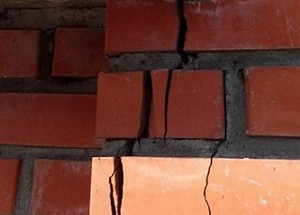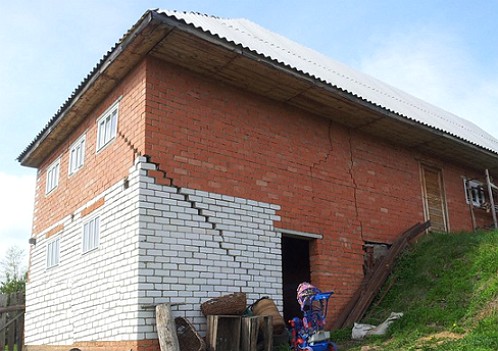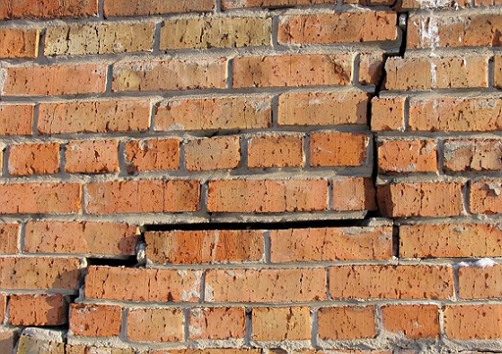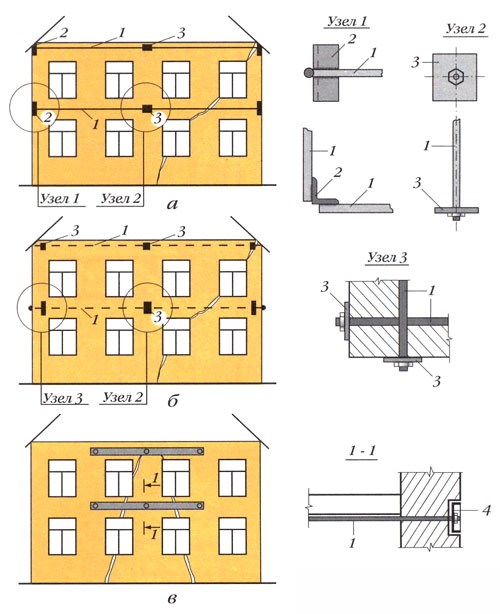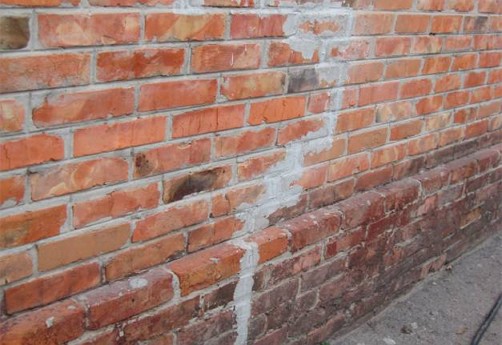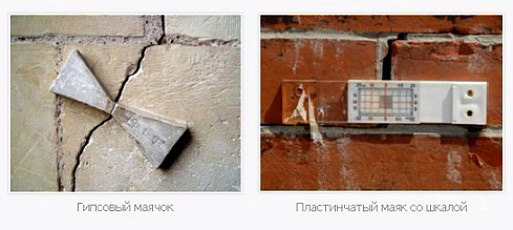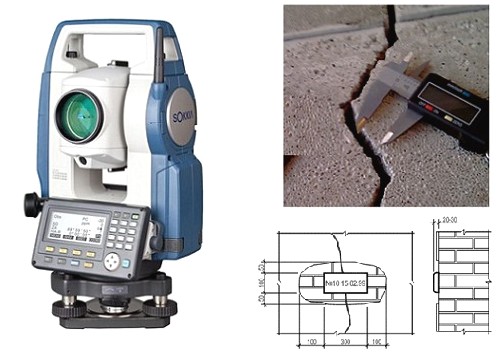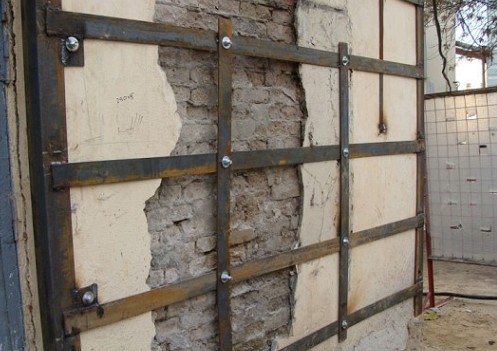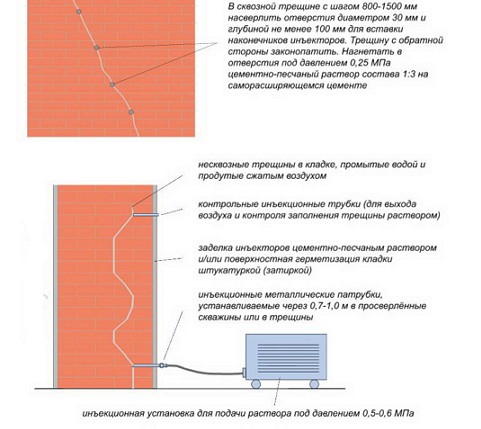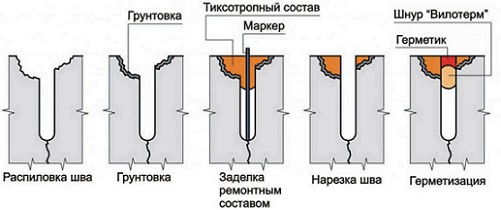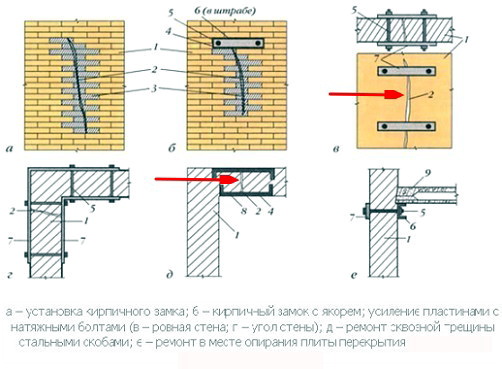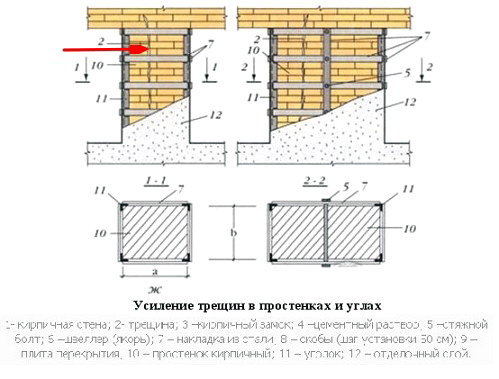The theory and practice of building brick walls of houses develops along a uniform straight line until the clutches give a crack. The detection of the crack suggests further forced measures to eliminate the defect - stop development and repair the defect. Useful advice from the masters will help to do this.
Content
Why there are cracks in the wall of a brick house
With the passage of time and during the operation of brick buildings and structures, an inevitable process of cracking occurs.
There are many reasons for the occurrence of cracks, among which the most common are:
- natural shrinkage of the foundation and walls of the house during the first years of operation
- deformation of foundation slabs or blocks due to insufficient depth of the bookmark
- uneven load and bearing capacity of the soil
- inconsistency of the bearing capacity of walls and overlaps of the previously declared values.
Naturally, to determine how serious the process of cracking, can a specialist who has a technique for determining the formation of cracks.
To determine visually the cause of the occurrence and formation of a crack can be by its degree of expansion and size. If the horizontal crack of the brick wall is expanded downward, this indicates an increased load of floors.
In the case of expansion of the crack up, the cause of cracks in the brick walls is due to shrinkage and subsidence of the foundation. However, visual observations, not confirmed by monitoring the formation of cracks, are not completely reliable.
Let us suggest that there are several ways to monitor cracking.
Helpful Tips
Cracks in the degree of opening are divided into small (up to 5 mm), medium degree (from 5 to 10 mm) and large, more than 10 mm. In addition, depending on the location and nature, the cracks in the walls can be longitudinal, transverse and inclined. The depth of occurrence of the cracks are divided into surface and through. Specialists have measured the opening of cracks produced by special probes. You can make an independent measurement by any measuring instrument.
The complexity of eliminating cracks can arise if the structure is dilapidated or is a historical object and an increase in the load on the foundation, walls and ceilings can provoke the destruction of the structure. Here to the aid will come the modern building material, namely - carbon or composite. The use of carbon and composite materials does not require large-scale works, all the action takes place without stopping the object.
Monitoring of crack formation
Visual observation of the formation of cracks of any degree of disclosure can not be reliable without monitoring, monitoring the fact of the occurring changes in the stress-strain state of the brick wall.
track the process of crack formation by beacons
The simplest and most accessible method for determining the development of cracks is the installation of paper tape on an existing crack or installation of a beacon. Lighthouses are left from a gypsum solution with a width of 70 cm and a thickness of up to 8 mm. For control take a certain length of time, during which it is planned to monitor the development of the crack. If the process of fissuring develops dynamically, then on the installed gypsum beacon or paper tape, the process is monitored - the tape is torn.
A more complex and expensive monitoring of the formation of cracks on the walls of a house or building is instrumental multi-stage observation, at each stage of which the dynamics of the object's parameters are determined and compared with the parameters determined at the previous stage of monitoring.
About the types of cracks formed on the brick walls of the houses tells a video.
However, from prolonged monitoring to the owner of a private house, on the walls of which cracks were formed, it is not easier. Therefore, it is necessary to move to decisive action. How to remove a crack in a brick wall?
Methods and methods of sealing cracks
There are several ways to seal cracks on a brick wall, based on the following reinforcement measures:
• application of sealant, foam or repair mortar to the crack cavity
• strengthening of walls, supporting elements and piers using metal staples
• Screed.
Helpful Tips
It is recommended to choose the method for sealing cracks depending on the width of the opening. The basic technology of sealing the cracks involves pre-cutting and processing the edges of the defect. Modern sealing materials and repair compounds allow the cracks to be embedded quickly and reliably. But it is necessary to choose the repair means correctly.
sealant, foam and repair composition
When a crack is formed of a small size, the opening width of which does not exceed 5 mm, the sealant is made with sealant for cracks in brick walls or repair mortar. The gap is preliminarily expanded with a sharp tool and hammer, cleaned of dust and dirt and the cavity is filled with foam, sealant or mortar.
Repair work can be performed using a syringe with a quick-setting compound (liquid nails, silicone or cement mixture on portland cement M 400). When cracking foam cracks, the crack cavity is filled in the traditional way, and after the compound is hardened, the excess is removed with a knife from above.
Resuscitative work "without consequences and remission" will be justified in case of insignificant opening of cracks. In the severe case, when the cracks are open to a width of 5-10 mm or are of a through nature, the repair requires more substantial intervention.
castle wall
Repair of large-opening cracks with a width of 5 to 10 mm is recommended to be done by dismantling the brickwork with a replacement for a new one. New masonry is assembled in the form of a lock with additional reinforcement of the edges with a metal strip.
For embedding and eliminating visually noticeable cracks with a 2-3 cm wide opening, the method of laying the brick is "lock" or "lock with an anchor".
The lock is a metal bandage or steel profile, which is applied to the crack area across and fastens it to the wall with anchors. It is possible to attach staples that hold the wall in problem areas: piers, corners, joints of external and internal walls.
On the through crack, regardless of the degree of its opening, install two steel plates, the fixing bolts pass through the wall. Staples are clogged in the masonry on both sides of the crack.
How to make a crack in the brick wall, shown here.
screeds
In hard-to-reach places and local damage to the brickwork in the area of pilasters, poles, lintels and supporting beams or trusses, the damaged areas are pulled together by single-banded steel band strips and into the masonry under pressure, injected with cement mortar.
The brick wall tie is made using rods, thick-walled tubes, threaded studs and nuts. Pipe pieces are applied to the crack in the form of a tire, the ends of which are fixed with washers and nuts.
But the trivial ways and methods of cracking have spawned new technologies.
Currently, there are innovative technologies based on the use of injections with special mixtures of Brickfix.


